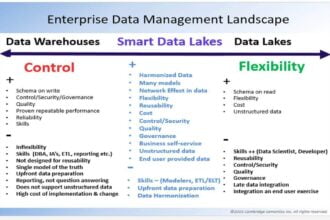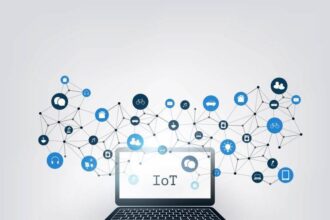While consumer Internet of Things (IoT) devices have drawn most of the press attention, it is the enterprise-scale Internet of Things adoption that is arguably having a larger impact. Focused on the critical infrastructure of the buildings and cities in which we inhabit, this technology is quietly revolutionizing real estate, the largest asset class in the world.
Deloitte Insights expects 1.3 billion IoT devices to be deployed in commercial real estate by 2020. These IoT predictions are powerful. The falling cost of IoT sensors and data storage have been well documented, but the scale of these deployments necessitates a wireless infrastructure that is largely nonexistent in the industry.
To be fair, IoT predictions around the idea of using sensors to collect granular data to drive automation and decision making is not new to commercial real estate. For decades, this technology has been delivered in the form of “Building Management Systems,” usually hosted on closed building intranets. However, these systems can cost millions of dollars to implement, so deployments have been limited to only the most high-end buildings.
The Internet of Things impact can help deliver the same benefits to occupant experience, equipment reliability, and energy efficiency, but at a fraction of the cost.
However, before specific applications can be considered, the wireless networking infrastructure must be designed and executed to provide scalability, reliability, and flexibility.
Because enterprise-scale deployments cover a wide area and must be transmitted through many layers of walls and ceilings, the importance of this step is often underestimated.
How to Implement a Wireless Networking Infrastructure
Components
1) The Nodes
This is the actual device collecting data (eg. electrical meter, moisture/water sensor, air quality sensor, etc.) The capabilities of the device determine the next step: the type of wireless network interface.
In some cases, IoT devices support a wireless communication interface themselves; however, more often the device communicates in one or more protocols (Modbus TCP/RTU, Bacnet, Pulse), which are traditionally wire-based. To make devices communicate wirelessly, additional hardware is required.
2) Wireless Communications
Devices that enable wireless communications either attach to a node or act as an access point, station, or repeater. The optimal configuration will depend on the length of the transmission and the layout of the building. There are several options available today. The most popular are WiFi (2.4Ghz/ 5Ghz), Cellular (3G/4G), and one of the many protocols on the sub-GHz (433 MHz/ 868 MHz/ 900 MHz).
The desired frequency is determined by the length of the transmission and bandwidth required. The lower the frequency, the better the penetration between walls, floors, etc. The higher the frequency, the more bandwidth you have within your network.
3) Gateway(s)
Ideally, there is one gateway, but because there are so many IoT devices, there is often a mix of nodes with different communication protocols, leading to multiple wireless interfaces, and operating on multiple frequencies.
The gateway often has two jobs: to act as the medium to communicate with the cloud and as a totalizer to aggregate all data from many nodes.
Considerations
Knowing what you want is very important when designing the wireless device and gateway infrastructure.
Before deployment, it’s important to ask yourself a series of questions: How critical is this data? What happens if one or more components fail, and how does that affect the rest of the nodes? Can these nodes store offline data? If so, for how long, and is this site local or remote? Is there someone at the location who can troubleshoot? If not, when can I send someone to diagnose this issue and how much will that cost?
There are also several technical considerations when deploying the Internet of Things at the enterprise-scale. These include bandwidth requirements, number of end nodes, time interval desired, and the types of data. For example, when measuring electrical consumption for a large piece of equipment. Do you need one reading type, such as kilowatts, or multiple including voltage, current, and power factor?
Looking Forward
Low Power Wide Area Network (LPWAN) is growing in popularity. These networks are especially useful for nodes that operate on low power (such as with batteries) but can also be used for nodes that have a dedicated power source (eg. meters).
In theory, this network will consolidate hundreds or thousands of nodes through a few LPWAN devices spread across the building.
But there is currently an issue with bandwidth. LPWAN is great if you are sending one or two reading types at a given time interval; however, most LPWAN networks limit the number of data packets.
Wrapping Things Up
What’s great about the IoT is its affordability, and the strategic way sensors can be used to make smart buildings and smart cities. The catch is how tough it can be to make sure that wireless networking infrastructure is in place to support this IoT data collection and the amount of data they transmit. That said, the impact of the Internet of Things remains powerful.
The goal is to create an infrastructure that can be replicated across a portfolio, that is reliable and efficient in transmitting data, and that is flexible enough to support many data types. Fortunately, once a wireless networking infrastructure is in place, the cost of the sensors and configuring them with a software platform is minimal. Get this right, and the sky is the limit.










